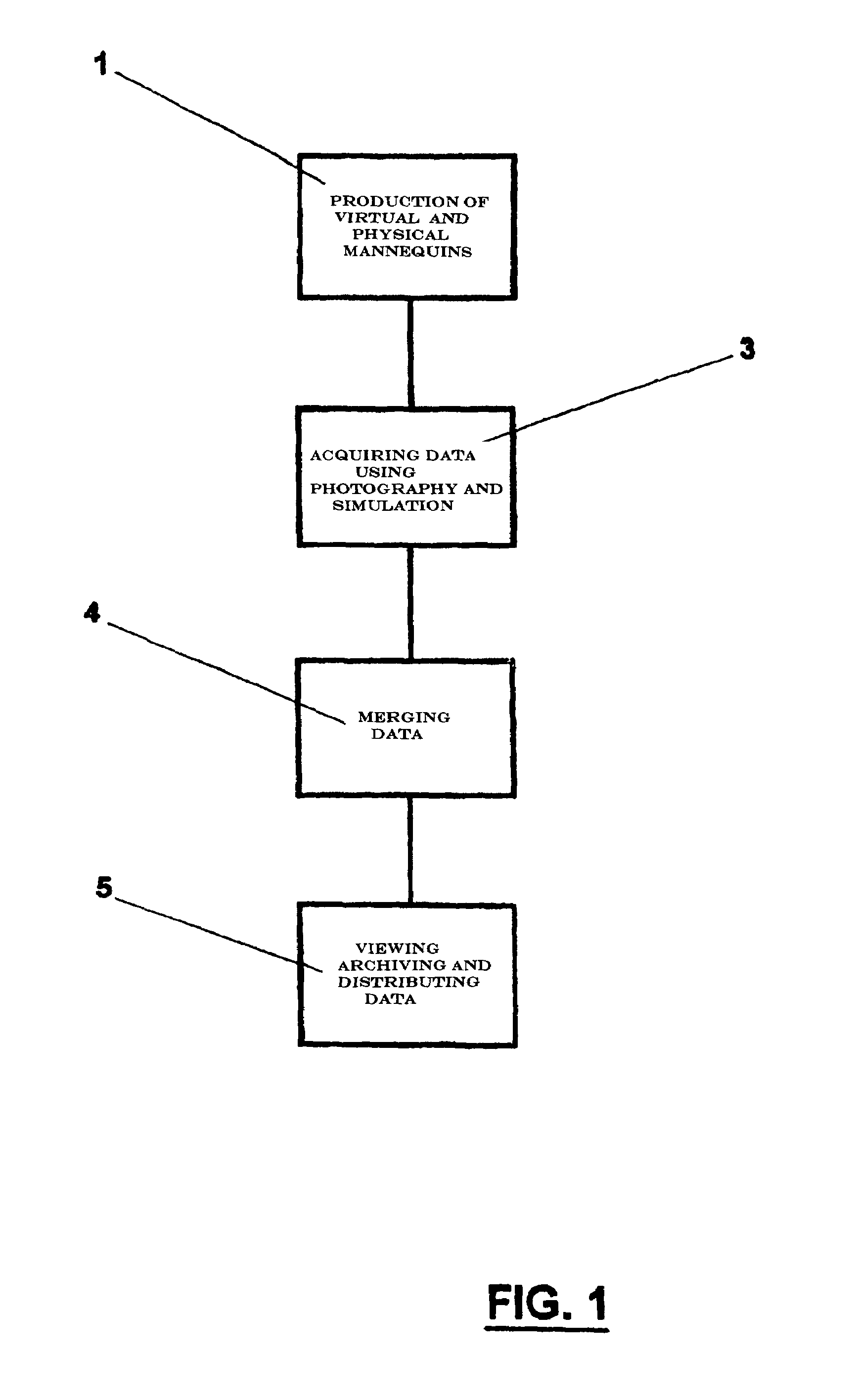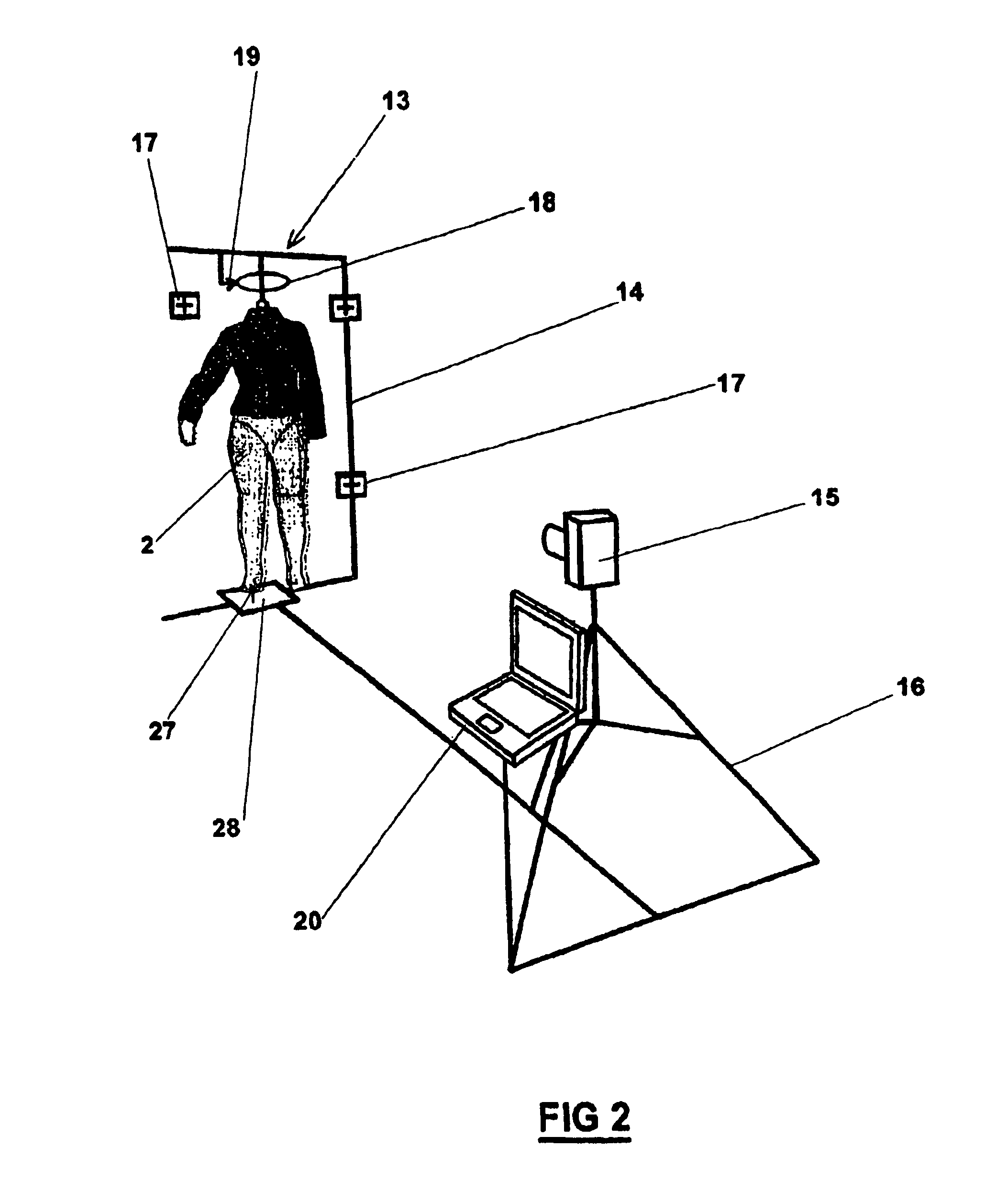Method and device for viewing, archiving and transmitting a garment model over a computer network
a garment model and computer network technology, applied in the field of methods and devices for viewing, archiving and transmitting garment models, can solve the problems of inability to exchange opinions as to the fit of garments, lack of realism of garment models produced entirely by software, and inability to have an exchange of opinions as to the wearing of garments, etc., to achieve the effect of communicating
- Summary
- Abstract
- Description
- Claims
- Application Information
AI Technical Summary
Benefits of technology
Problems solved by technology
Method used
Image
Examples
Embodiment Construction
[0077]The invention constitutes overall an interactive integrated system which proposes tools for viewing, organising and communicating appropriate information relating to the. construction, measurements, fit, manufacture of an order relating to a specific model of a garment label, and which is based on the provision of the photographic or virtual image of this specific garment being worn by the specific human mannequin (SHM) used by the designer or the specific virtual mannequin (SVM) of this same outline.
[0078]The conventional method of manufacturing garments is still generally used by the various parties involved, nationally or internationally, throughout the clothing supply chain. The designer creates his or her garment models based on his or her own ideas or on the style and component specifications indicated by the product managers. The prototype sample manufactured and the technical file of specifications and costs are then physically sent to the other parties to obtain their...
PUM
 Login to View More
Login to View More Abstract
Description
Claims
Application Information
 Login to View More
Login to View More - R&D
- Intellectual Property
- Life Sciences
- Materials
- Tech Scout
- Unparalleled Data Quality
- Higher Quality Content
- 60% Fewer Hallucinations
Browse by: Latest US Patents, China's latest patents, Technical Efficacy Thesaurus, Application Domain, Technology Topic, Popular Technical Reports.
© 2025 PatSnap. All rights reserved.Legal|Privacy policy|Modern Slavery Act Transparency Statement|Sitemap|About US| Contact US: help@patsnap.com



